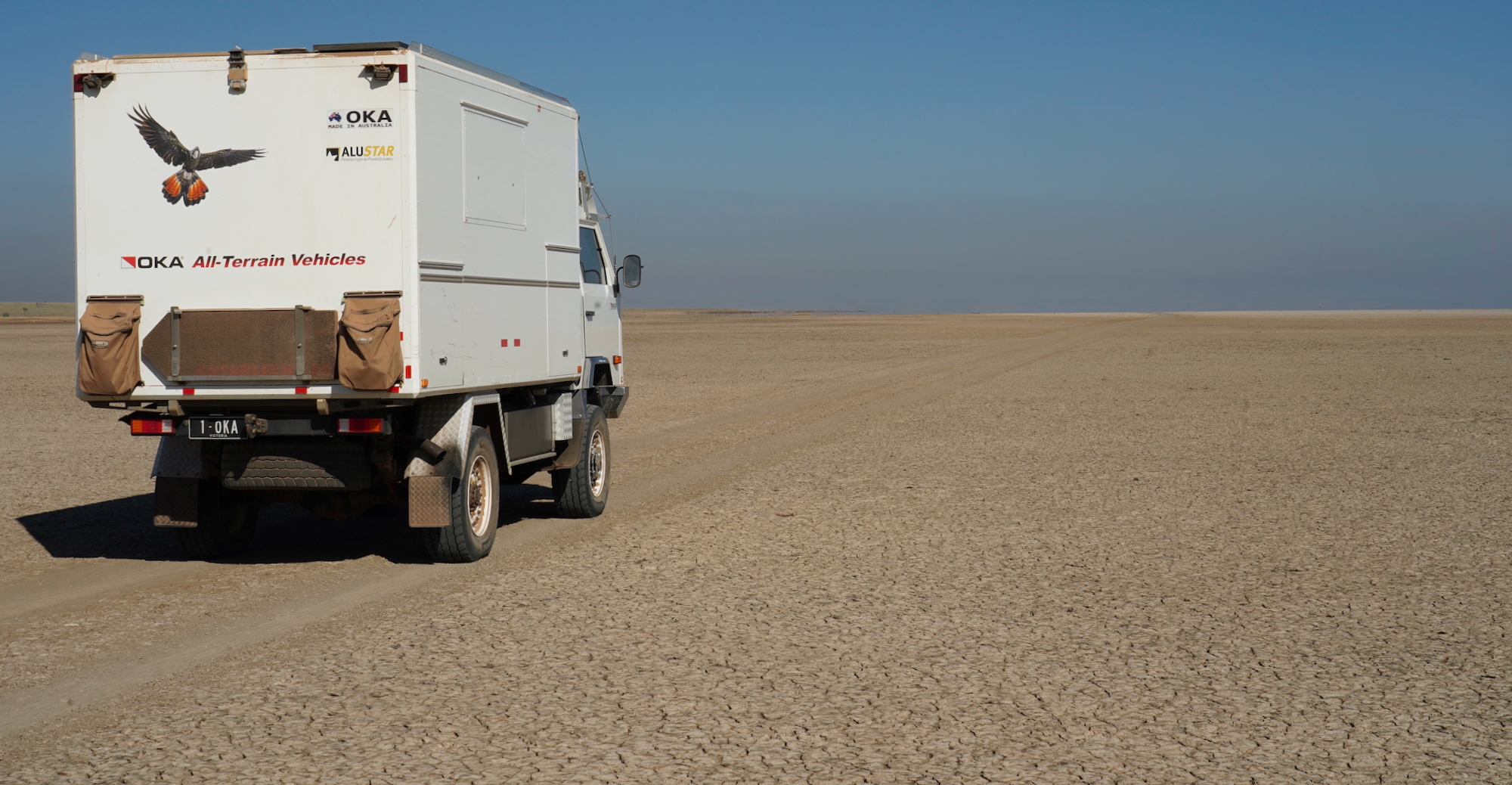We expect that you will be reading this quite some time after it has been written. Today is the 18th of June, 17 days since we left Broome. We have been told that throughout this north Kimberley region the only place likely to have good enough internet to upload our blog posts will be the small remote aboriginal community of Kalumburu on the northern coastal extremity of the Kimberley. They have had an Optus tower installed, & an email to the community received a response saying that Optus Sim cards can be purchased at their general store ….. unless they have sold out! If they have stock, what you are reading now should hit your computer screen around early to mid July. If we are unlucky & they have sold out it will likely be early to mid August.
(EDIT. It turns out that there is no Optus ‘tower’.It is only a small repeater on top of a women health certre, & provides a signal which is more miss than hit!). There is however satellite wifi provided by the Kalumbururu Mission – expensive but usable – hence this post (on 9th July). Others will have to wait until we reach Kununurra in a few weeks time. Rather than attempting to write a single huge blog post it seems wise to break this ‘off grid’ part of our travels into smaller parts. You may receive a number all at once, reflecting our reality. Post’em when we can. Writing them remains a staple activity for me & occurs more often.
This therefore is North Kimberley Part 1 – Broome to Mt Hart Station.
We met Rowena, the owner of Nyx, & of the house we had been looking after, at the airport on the Saturday. Her first words were “Is everything OK?” I assured her all was well & after she had a bit of a look around she declared herself very happy with what she had come home to & made it clear that we would be very welcome to house sit for her again. Given that this was our first house/pet sit we were both pleased with her feedback & surprised that not all her house sitters had been up to our standard. This bodes well for our house sitting future.
Repacking the car & Tvan had been something we had managed over several days & we were ready to leave early on the Sunday morning. Returning to Langey Crossing, 180kms east of Broome, to camp on the banks of the Fitzroy river for a few days was something we fancied. We loved the place 10 years ago & again last September prior to going up the Peninsula. It would be, as returning to familiar spots often is, an easy way to work ourselves back into camping mode after a 7 month break. Water levels were a little higher than on our last visit, most probably a result of recent high tides which had made it across the sand bars at Telegraph pool a short distance downstream.

As expected there were plenty of crocs to watch, mainly ‘Freshies’ with their narrow snouts, but mostly around the maximum size that Freshies grow to – around 2.5 to 3 metres. Salties can grow to 7 metres but the few here that we saw were similar in size to the freshies, often making it difficult to identify what type we were looking at. One thing is for sure, the Fitzroy River, like many of the Kimberley’s waterways, is not a place to swim! We arrived on a ‘long weekend’ – Western Australia Day public holiday on the Monday, so lots of campers (but still plenty of space – the campspots along the river extend for kilometres). Incredibly we observed one young bunch of whitefellas swimming & splashing around in the water! None were taken, but could just as easily have been! They all left on the Monday morning. One group left their camp fire still flaming which we were initially annoyed about, until we discovered several baked potatoes in foil still in the fire & baked to perfection. Made a nice brekky given that the unrelenting wind made cooking on our outside gas kitchen impossible, & kept the fire to cook our lunch on. Thanks for that fellas. 🙂
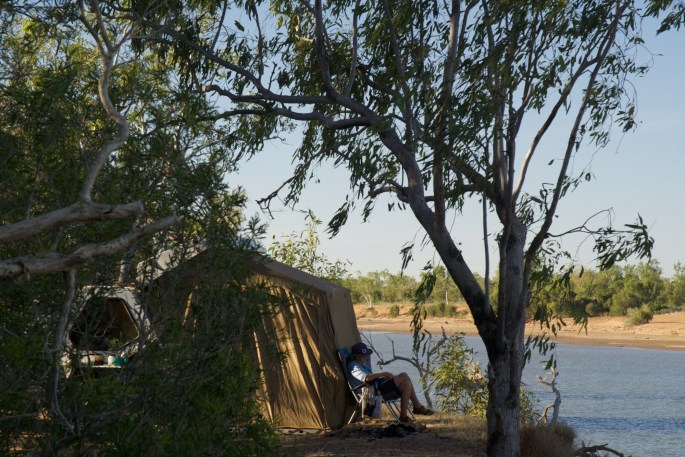
If anything, there were more birds to see than last time. Among them Jabirus, Brolgas, Black Kites, Egrets, Terns, Rufous Whistlers, & White & Straw necked Ibis’. Red Tailed Black Cockatoos collected in nearby trees, forming into a larger flock before flying en masse down the river each evening at dusk. Early morning aerobatic displays by flocks of 100 + budgies, joining & separating, & joining again. Their perfectly snynchronised maneuvers always makes getting up early feel rewarded.

A short distance back from the river in the spinifex & grassland there were many more birds, the finches & other small seed eaters, mostly too small, & too fast to identify, but flocks of Peaceful Doves & the always neat Double Barred Finches were common. Less common & for us exciting to see one morning was a flock of Star Finches at close quarters to our camp. Much of our time there it was unpleasantly windy, which of course also means dusty, so the camera got very little use. I did make an exception for the Star Finches though
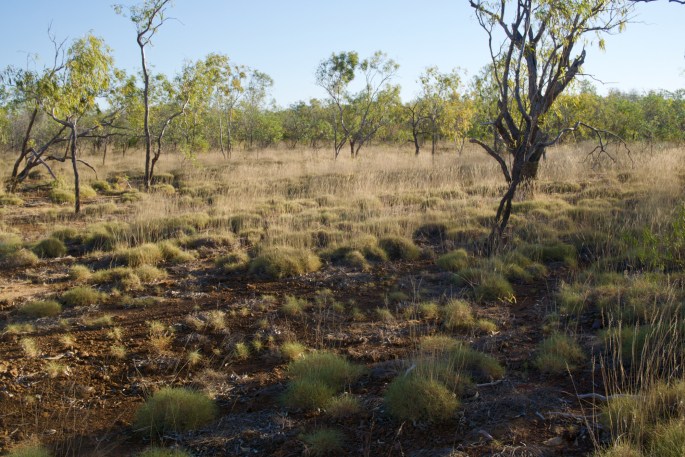
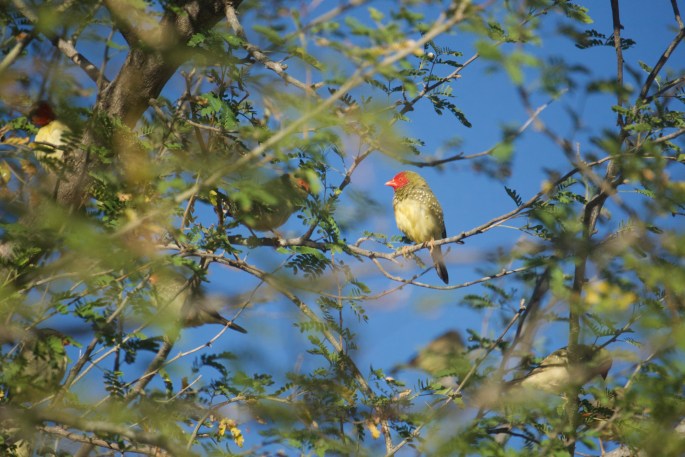
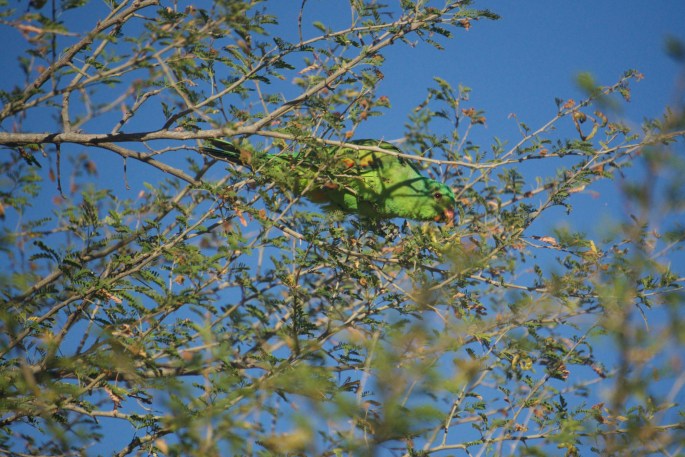
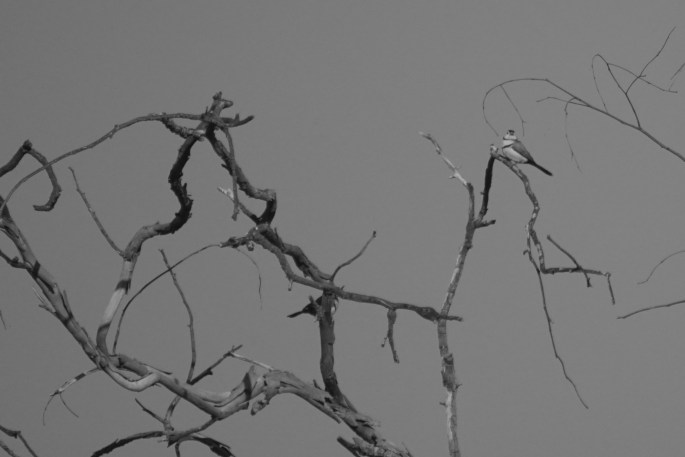
……….and another most unexpected discovery. Freshwater Sawfish are a pre-historic looking fish which are an endangered species & live primarily in the Fitzroy & a few other Kimberley Rivers. They are rarely seen although pubs often have one of their ‘saws’ hung on the wall, from back in the days when they were considered a good trophy. Sadly the one we came across when out walking one morning was dead. We felt sorry to see a rare beast like this dead, but lucky to have actually seen an entire fish. There was no evidence to suggest how or why it died, we hope it was old age & that it had had a good life. At around 2 to 2.5 metres long it was a big fish & larger than we thought they grew to.
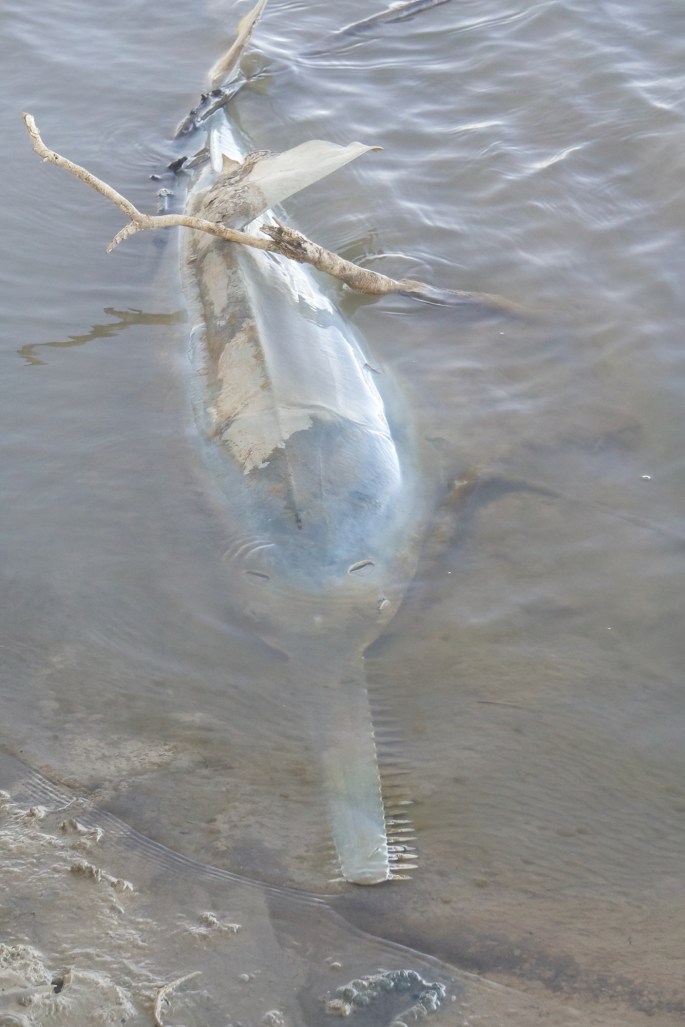
The wind drove us to move camp away from the river to a more sheltered spot by our 3rd morning. We needed a calmer surrounding. It seems to be a rule that anyone travelling for any length of time will, sooner or later, experience the stress of fridge or freezer problems. Here we were, having just filled our freezer to the gills with enough meat & fish & frozen veg to feed a small army – ok, a slight exaggeration, enough to last us for 6 weeks & the freezer starts misbehaving.
In Broome, plugged in to mains power we had run it at it’s maximum of minus 18 degrees – no problem for several days. Now the temperature display was fluctuating rapidly. Minus 20 degrees (had never seen it that cold before), up to minus 15, then minus 12 & back to minus 16 all within the space of less than a minute. Hard to have any confidence in a readout like that. After a while it settled on minus 10 & the contents were all still frozen solid. We resolved to change it’s setting to minus 10 & to monitor it’s performance & the state of the contents over the next few days, wondering whether the thermistor was failing, or this was just because the freezer was so densely packed. The butcher had done an excellent job with vacuum sealing everything as flat as possible for us as we requested, making the contents packed far more tightly than we have ever managed before. Fingers crossed.
The northern winter is here. The doona (duvet for the Poms reading) was needed at night for the first time in 8 months – still haven’t broken out the nightie or T shirt yet though ……………… & don’t expect that need to arise.
.Moving on eastward to Derby we had hoped to catch up with a friend made via the FB Broome weather group whilst we had been at Goombaragin. Much of the weather there came from the Derby direction & Phillipa had been often helpful in alerting us what was coming our way. Unfortunately because our timing changed as a result of the windy weather we passed through Derby whilst she was at work. A shame as we are great believers in the fact that everywhere has something going for it even if not obvious to outsiders passing through. Derby was a place where I think some inside knowledge would have been of benefit. We searched in vain for a public dump point to empty our portapotti, found the staff at the tourist info centre to be disinterested, so only stayed long enough to get fuel & water from a servo, & to stroll around the town’s wharf/jetty before setting off along the Gibb River Road. (GRR from here on to save wearing out my fingertips)
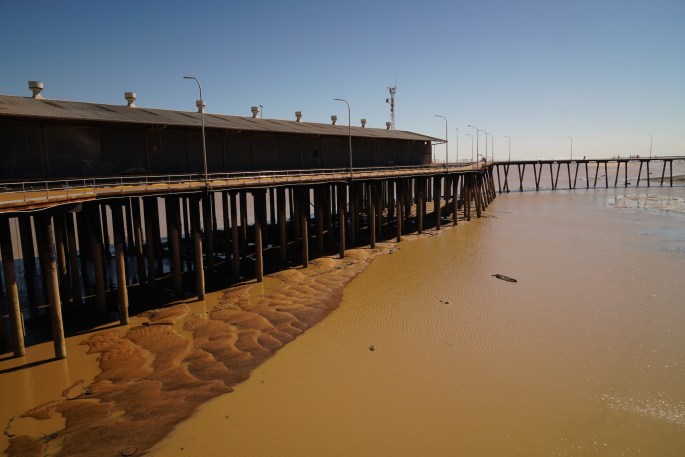


The GRR is an Aussie icon which anyone with an interest in the Outback aspire to discover for themselves. 20 years ago it was still a goal for adventurers, today it is still an adventure, just less so as more tourists travel it each year resulting in more infrastructure to keep them happy. No 5 star hotels (yet), but a few very expensive under canvas camps have been set up for the well heeled short on time, & a number of cattle stations offer campgrounds with hot showers & flushing toilets. Once upon time a traveller could pretty much stop where the fancy took him or her, but today there is less opportunity for this, but it is still possible to find places to freecamp & to experience the dream which so many aspire to but often miss. Camping alone in the wild just as folk have done for hundreds of generations. Nothing quite like being alone in a big country like this. The nearest neighbour may be 1 or 100 kms away, you would never know, & all you hear is the sound of the bush & see the big starry skies each night.

The GRR was originally carved out across the rugged & often impressive landscape as a cattle road, a means for the many remote million+ acre stations to get there cattle to market. It is still used for this, so the huge roadtrains (trucks with multiple trailers – often totalling close to 60 metres) are monsters to respect on road. It is unsealed for most of it’s length – a little over 650kms from Derby to where it joins the Northern Highway just shy of Kununnurra. it is renowned for it’s vehicle destroying corrugations, recommended to carry at least 2 spare tyres (we have 3) & a minimum of enough water & food to last 3 or 4 days. There are two small roadhouses where fuel & basic supplies can be obtained.

Main stop off points are impressive gorges & swimming holes, left either from the previous wet season’s floods (the GRR is mainly impassable during the wet seasons – huge rivers carrying unimaginable quantities of water across the road & through lush & verdant bush, so green that it almost hurts your eyes) and intimate waterholes fed from artesian springs – which help to keep wildlife alive in dry times. 99% approx 🙂 of tourists only ever see the brown & dry Kimberley, & the waterholes in gorges & creek beds offer an inviting insight into what few are privy to witness. Our hope to be crossing the GRR as early after the wet season closure as possible have been thwarted by what has probably been the driest wet season on record in this part of Australia. It follows a previous relatively dry wet season too (except for Broome & the west coast) which is compounding the effects on country dependent upon the Wet/Dry extremes.
Approximately half way along the GRR is the turn off to Kalumburu, approximately 300kms north from the GRR. This more minor road is the only other road in north Kimberley. That is just two roads in an area something like 3 times the size of England & with a population probably little more than a modest sized English village. There are a further two tracks which reach the coast, both to the west – one to Walcott Inlet, & one to Port Warrender, both names on a map – no communities & infrastructure. To the north east a gnarly & inaccessible route – the Carson River Road winds from Kalumbaru down to Wyndham, but obtaining permission to drive this is close to impossible, & those who have managed this in the past have taken years to get the permission & rarely driven it in just a single vehicle. It is very remote.
We are hoping to get to Kalumbaru, Walcott Inlett & Port Warrender however.
The first 100kms or so out of Derby is sealed Road, after that the only sealed road is across some river beds & on a couple of the steeper inclines through the mountain ranges. Mostly it’s dirt road, dusty, bumpy & unpredictable. We decided to give the popular (well deserved popularity) Windjana Gorge, Tunnel Creek & Bell Gorge a miss as we visited these back in 2010 (http://www.cuppa500.com/Big_Trip/Entries/2009/8/14_Entry_37–Gorges%2C_Boabs%26_Crocs.html). They are stunning places, but we were keen to reach what for us would be ‘virgin ground’. After crossing the King Leopold Ranges we took a northward turn up a track for 50kms to Mt Hart Station. Flags flying at the turn off advertised the campground. ‘The only grassy campsite on the GRR, Bar, Pizza, Fish n Chips, hot showers & free washing machines’ . It wasn’t an awful place, but the reality was a little different to what the flags had promised. Certainly we did have a grassy riverside camp, hot showers which were cold, a washing machine which was at the homestead/dining room/bar a couple of kms from the campground, & fish & chips at $30 per head. The ‘attractions’ were not that special, a small gorge made for a nice walk up the rocky creek bed to a body of clear water, another ‘swimming hole’ held unpleasant murky looking water, with access around what looked like recently bulldozed piles of earth giving a building site-like appearance, a walking trail was through burned out country. A couple camped next to us, Sharon & Peter had come across the Gibb from the east & were close to the end. They spoke what we were thinking , about our disappointment. They said that Mt Hart was their least favourite stopping place. This at least bodes well for us. They also commented that when a place advertises a bar as a primary attraction it probably doesn’t have a lot else going for it! A shame really, as by all accounts it used to be a ‘must visit’ place, back when a character name Taffy Abbots managed it. He loved the place & built it up over 20 years using much of his own finances to do so. He also bred pet dingoes which were a feature of the place as was the man himself. The leaseholders then shafted him, after he had made the place popular, kicking him out in a very public & acrimonious manner & at short notice, seemingly unable to recognise the value that a passionate man like Taffy, who had expected to see his days out there, gave to the place. It seems that they only had profit in their eyes. They have since leased it to a tourist resort company who in our view are missing the point in their approach & who we think likely will only be there in the short term. Sadly in a typed history of Mt Hart, pinned up at the campground ablution block Taffy only warranted a couple of lines within the 3 page document.

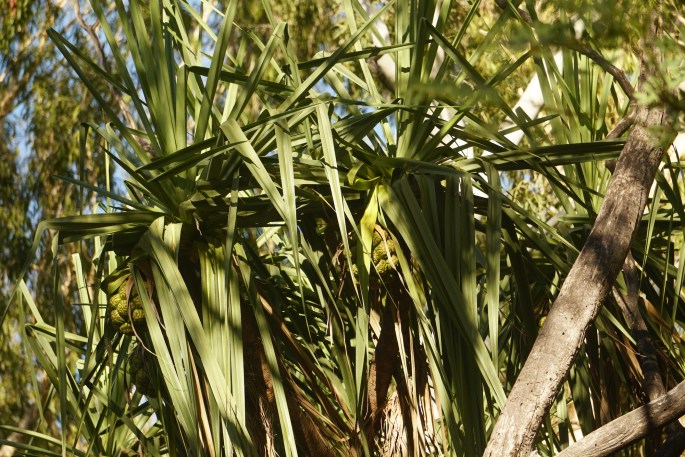

The highlight for us at Mt Hart was seeing a Black Faced Gouldian Finch whilst eating breakfast on two consecutive mornings.
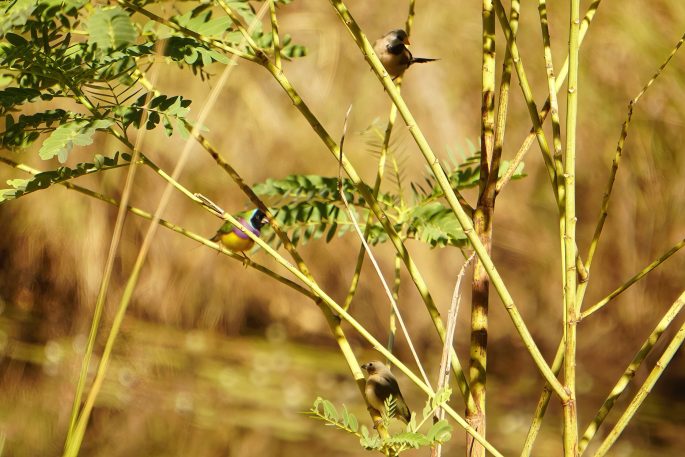
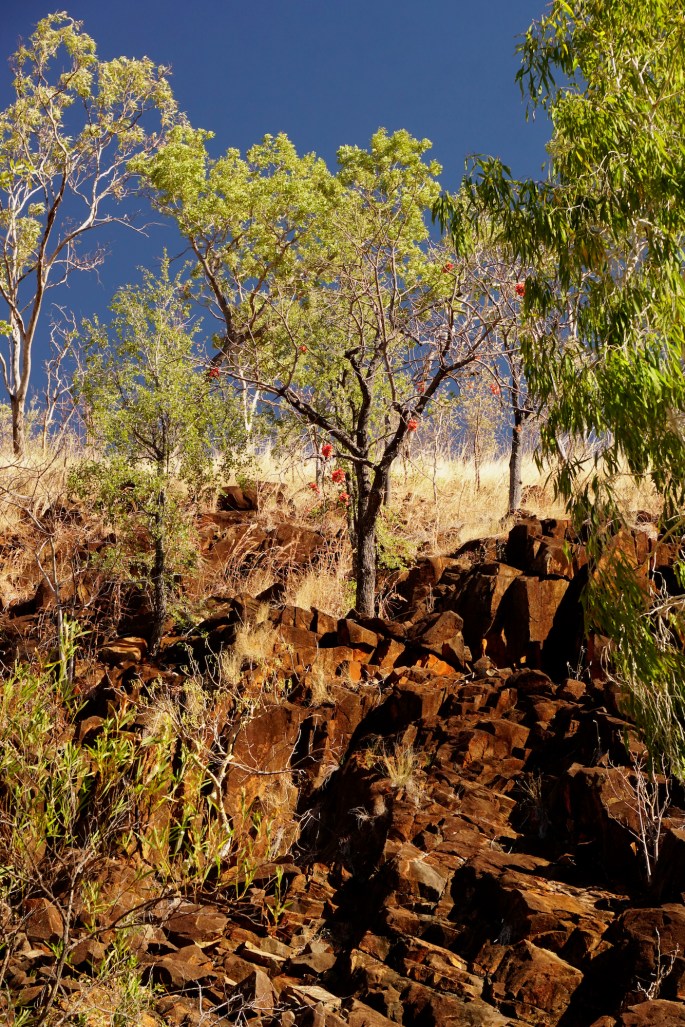
The freezer seems to have got over it’s hissy fit & is now behaving – minus 10 at night & minus 14 during sunlight hours. Everything nice & solid.

